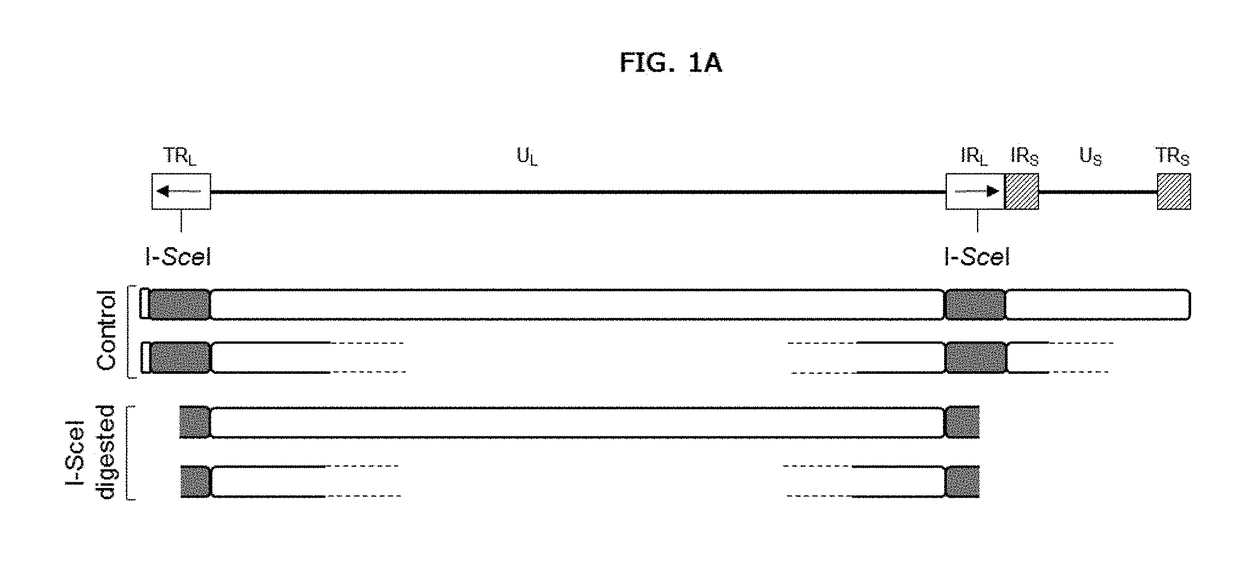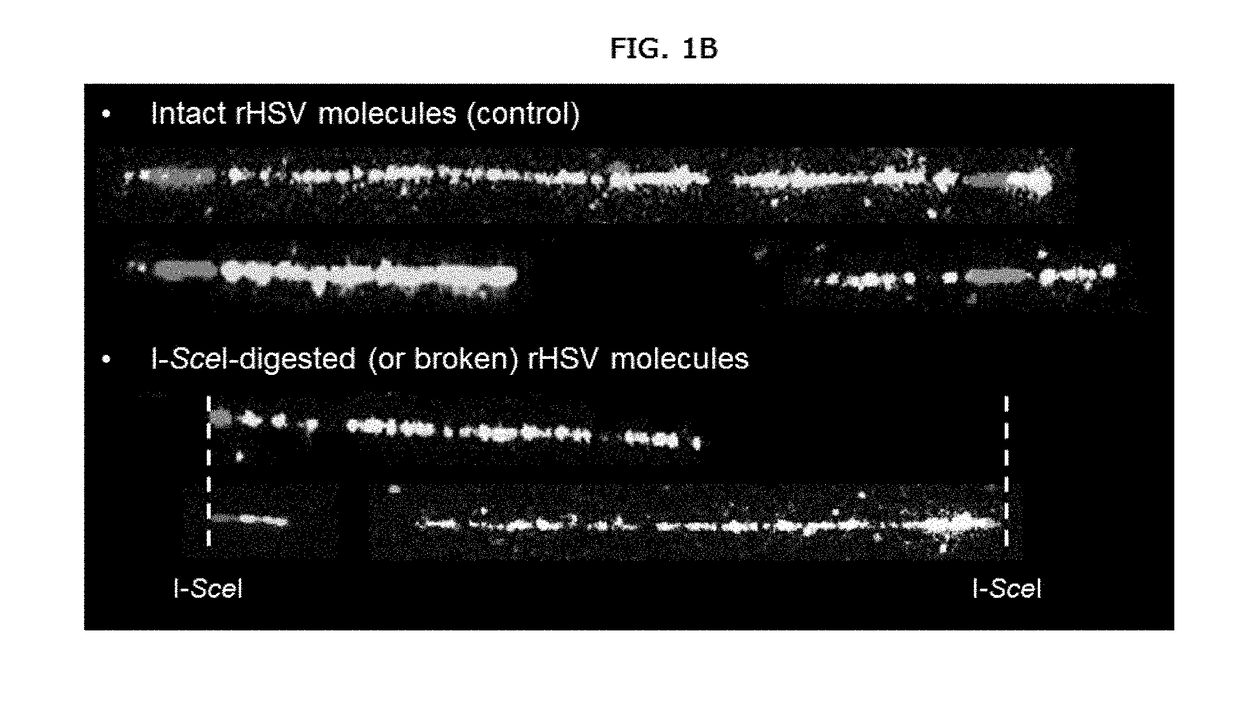Method for the monitoring of modified nucleases induced-gene editing events by molecular combing
- Summary
- Abstract
- Description
- Claims
- Application Information
AI Technical Summary
Benefits of technology
Problems solved by technology
Method used
Image
Examples
embodiment 1
[0128]A method for detecting, characterizing, quantifying, or determining the efficiency of a gene or genome editing procedure or event comprising performing a genome or gene editing method on target nucleic acid(s) and detecting genetic modifications such as deletion, duplication, amplification, translocation, insertion or inversion using molecular combing or quantifying the efficiency of the genome or gene editing method using molecular combing. The methods described herein may also be used for detecting, characterizing, quantifying, or determining the efficiency of modification or edits or made to other polynucleotides, for example, to segments of a genome outside of a coding or genetic sequence.
embodiment 2
[0129]The method of embodiment 1, wherein the gene or genome editing procedure comprises non-homologous end-joining (NHEJ).
embodiment 3
[0130]The method of embodiment 1 or any one or more of the preceding embodiments, wherein the gene or genome editing procedure comprises homologous recombination comprising at least one of allelic homologous recombination, gene conversion, non-allelic homologous recombination (NAHR), break-induced replication (BIR), single strand annealing (SSA), or other homologous recombination method.
PUM
| Property | Measurement | Unit |
|---|---|---|
| Fraction | aaaaa | aaaaa |
| Fraction | aaaaa | aaaaa |
| Fraction | aaaaa | aaaaa |
Abstract
Description
Claims
Application Information
 Login to View More
Login to View More - R&D
- Intellectual Property
- Life Sciences
- Materials
- Tech Scout
- Unparalleled Data Quality
- Higher Quality Content
- 60% Fewer Hallucinations
Browse by: Latest US Patents, China's latest patents, Technical Efficacy Thesaurus, Application Domain, Technology Topic, Popular Technical Reports.
© 2025 PatSnap. All rights reserved.Legal|Privacy policy|Modern Slavery Act Transparency Statement|Sitemap|About US| Contact US: help@patsnap.com



